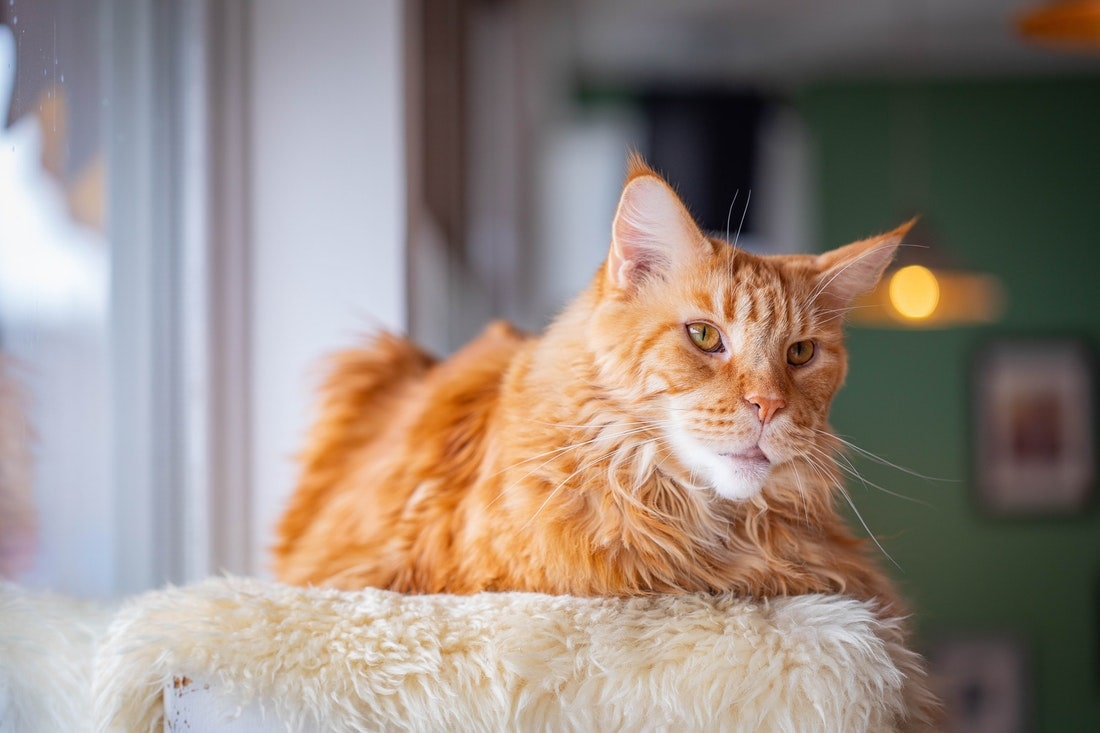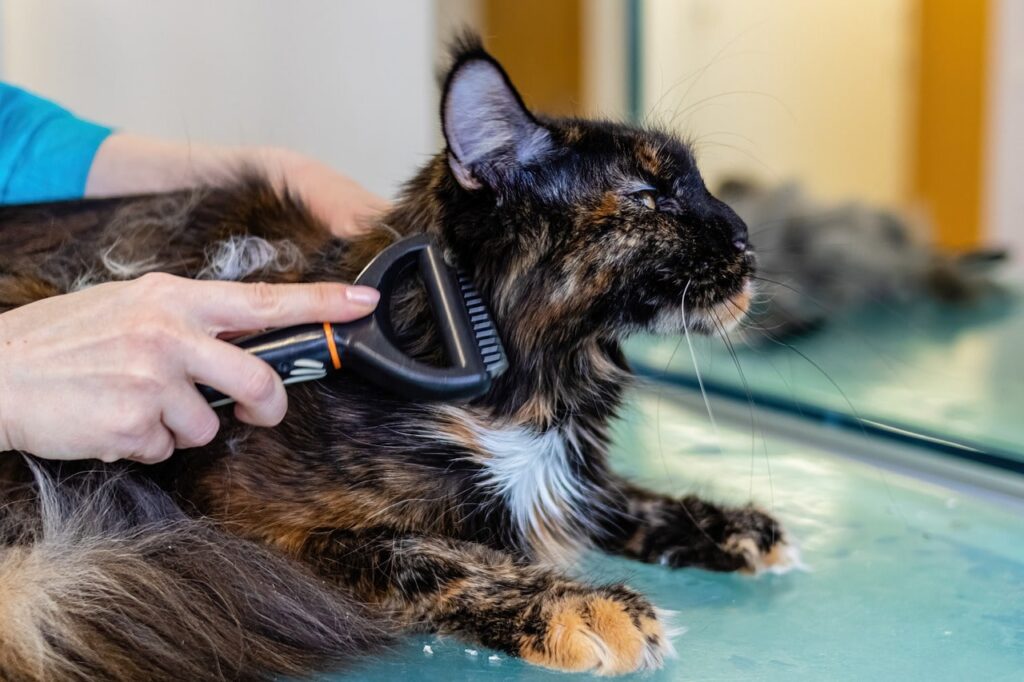Is your cat shedding so much that you can make a blanket from its fur? Are you concerned about the cat fur all around the house demanding a vacuum more than usual? Does your cat hack up regurgitated fur balls? If so, your kitty might be suffering from seasonal shedding or certain health conditions.
So, when do cats shed the most? Typically, seasonal shedding occurs in spring and fall in cats. Your cat might also shed more if she has allergies, skin infections, parasites, stress, and ringworm.
If your cat is shedding excessively all of a sudden, and you are curious about when cats shed the most, this post is for you. Read on and discover the reasons for excessive cat shedding and when to worry about it.
Cat Shedding Season
Shedding is a normal process in which a cat loses its dead fur to maintain the coat condition. Therefore, regularly losing a small amount of hair is healthy and nothing to worry about.
Generally, spring and fall are the cat shedding seasons in the wild. Cat shedding is highly influenced by the photoperiod, the amount of light a cat spends outdoors in the sunlight.
Wild cats live outdoors, go through weather severities and have a strong regenerative coat to regulate their body temperature. Therefore, outdoor cats shed more in spring to remove heavy winter undercoats and fall for the preparation of
You might be surprised to know that indoor cat shedding season is around the year. These felines shed less than outdoor cats due to exposure to artificial light and a moderate temperature inside the house. Indoor cats shed throughout the year, more or less depending on the breed, bathing, and grooming activities.
Why is my Cat Shedding so much all of a Sudden?
 If your cat is shedding so much all of a sudden, it might be due to certain health problems besides seasonal shedding.
If your cat is shedding so much all of a sudden, it might be due to certain health problems besides seasonal shedding.
Below are the reasons and solutions for why your cat has started losing excessive fur suddenly.
Allergies
Cats can experience air-borne and food-borne allergies just like humans. If you notice excessive shedding in your cat away from spring and fall, it might be due to allergies. Other symptoms include itching, bald patches, and rashes. Your vet will tell you the exact allergen after performing blood tests.
Stress
Several psychological factors are responsible for excessive shedding in cats, such as stress and anxiety. Your cat can develop psychogenic dermatitis to cope with stress. An anxious cat over-grooms herself or neglects her regular self-grooming habit resulting in excessive shedding.
There are many causes of stress in felines, including sickness, routine or diet changes, and separation anxiety. Visit your vet to get the root cause of stress.
Fungal Infection
Your cat is more likely to catch and suffer fungal skin infections from other infected cats. Ringworm is the most common fungal infection that can affect cats of any age.
Its symptoms include excessive hair loss, redness, and crustiness on paws, ears, and face. Get your cat evaluated by a vet immediately if you suspect ringworm.
External Parasites
Skin parasites such as fleas, ticks, mites, lice, and mites can affect indoor and outdoor cats. These tiny parasites feed on your cat’s blood, resulting in itching and skin irritation.
Consequently, your furballs are more likely to develop secondary skin infections. You should seek vet advice as soon as possible to cure skin infections related to parasites.
Aging
Older cats with compromised immunity are also vulnerable to many diseases causing hair loss. You might have noticed that your aged cat grooms itself less often, resulting in excessive shedding.
The most common age-related diseases in cats include thyroid, and diabetes, which can cause alopecia. A good diet, regular groomers, and vet visits help diagnose and treat aged cats’ health issues.
How much Shedding is too much for a Cat?
All cats lose fur; that is a healthy strategy to remove the dead, loose, and damaged hair. Cats spend most of their time self-grooming. If your kitty is not eating, playing, or sleeping, she’ll be busy self-cleaning or grooming other cats.
If losing fur is normal in cats, how much shedding is too much for a cat? One to two large sheds per year during the weather swings are considered normal in cats. These are a part of healthy coat maintenance.
However, if you notice hairballs everywhere in the house, even if your cat loses excessive hair on petting, it’s not normal and needs vet evaluations. It might be due to skin infections, parasites, allergies, and other physical or psychological health problems.
What Time of Year do Cats Stop Shedding?
Shedding in cats is highly influenced by photoperiod. It’s the amount of time your cat spends in daylight. Naturally, a cat sheds more in spring when the day length increases to remove the thick winter coat and in fall to prepare for the winter coat.
So, an average amount of hair loss is perfectly normal in cats year-round. In fact, a cat won’t stop shedding at any time of the year. You can lessen the excessive shedding by brushing your cat regularly.
Final Thoughts
Hopefully, you are all cleared after going through the facts on when cats shed the most. If your cat is losing fur excessively away from seasonal shedding, it might be due to allergies, age-related diseases, stress, and skin infections.
You can help excessive shedding in cats by regular brushing and visiting the vet and groomer’s place.





